Australian Store Tokens
Today a little divergence from buttons into the area of tokens as Thomas Stokes, probably the most prolific Australian maker of uniform buttons, also made a large number of these.
Unofficial coinage has proliferated whenever there has been a mismatch between supply and demand. This occurred in Britain before Matthew Boulton’s Soho mint produced sufficient official copper coinage. His mint also produced tokens. See http://www.austbuttonhistory.com/its-un-australian/the-wide-world-of-manufacturers/#Matthew_Boulton
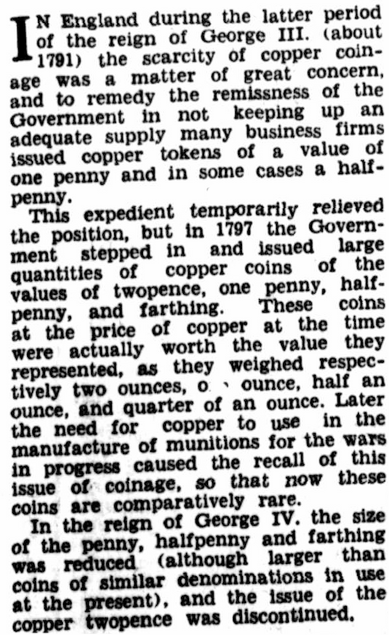
Sunday Mail (Brisbane), 11th November 1934 page 26.
In Australia and New Zealand, tokens were used, usually of copper, from 1823 (in Sydney) until outlawed between 1863 to 1878 in the various Australian colonies, and to around 1881 in New Zealand.
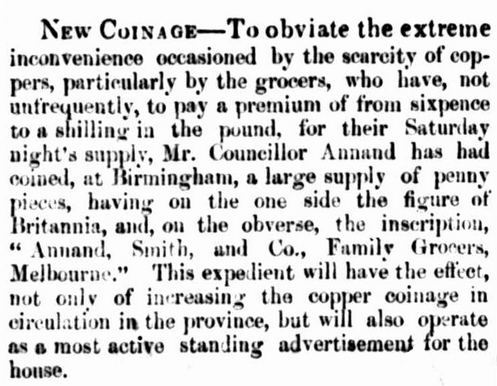
The Argus (Melbourne), 20th October 1849 page 2. These tokens were imported from Birmingham. The example of Annand, Smith & Co. was quickly followed by other merchants.
They had an implied value, usually of pennies and half-pennies but also thruppence and shillings, as the official coins issued were sovereigns and half sovereigns; too high for everyday use. (There was one four penny token struck.)
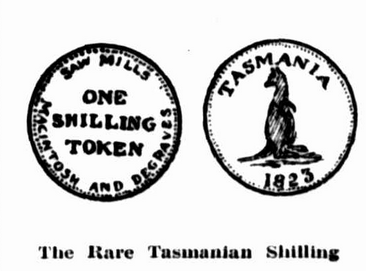
The Herald (Melbourne), 4th April 1925 page 17. This token was issued by Mackintosh and Degraves in 1823.
These were initially produced in Britain, then from 1852 in Australia by die-sinkers who had emmigrated to the colonies. They were produced for businesses to serve the double purpose of currency and advertising, as they bore the business’s name in the design. By 1862 at least 33 firms or individuals were issuing tokens, some in several varieties. Thomas Stokes produced at least 54 dated pieces of differing design, and was described as the most prolific producer. Tokens were also issued in silver, but these proved to be unprofitable due to the cost of the silver. According to an article in the Horsham Times in 1930, “All told – that is including New Zealand, … there are 740 varieties of tokens issued by 179 different firms.”
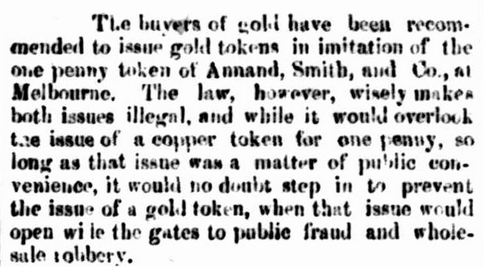
The Argus (Melbourne), 3rd October 1851 page 2. An article explaining how the trade price of gold had slumped to the large amount being found, tempting some to mint coinage.
The following examples were printed in The Queenslander, 27th July 1895.
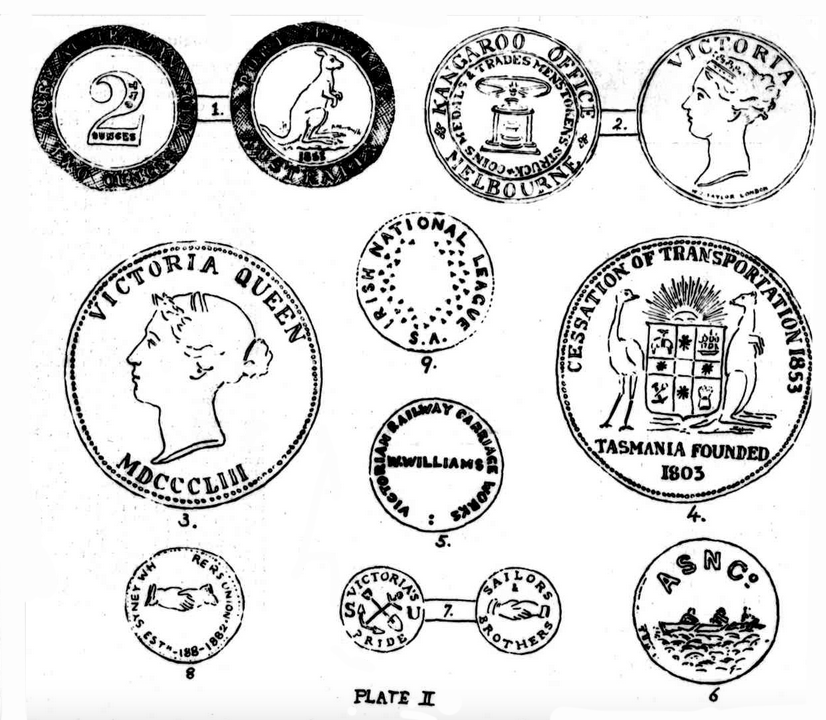
The token numbered 1 is discussed on the ‘Pre-Federation’ page, as was made of gold in an attempt to make a profit by buying gold below market price from miners. It was illegal to mint gold tokens, but the Kangaroo Mint claimed they were “weights”.
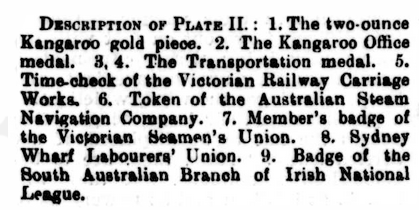
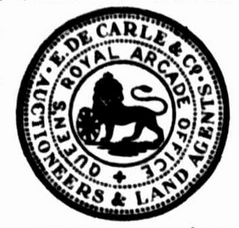
The Herald (Melbourne), 6th August 1929 page 6. A token from 1855.
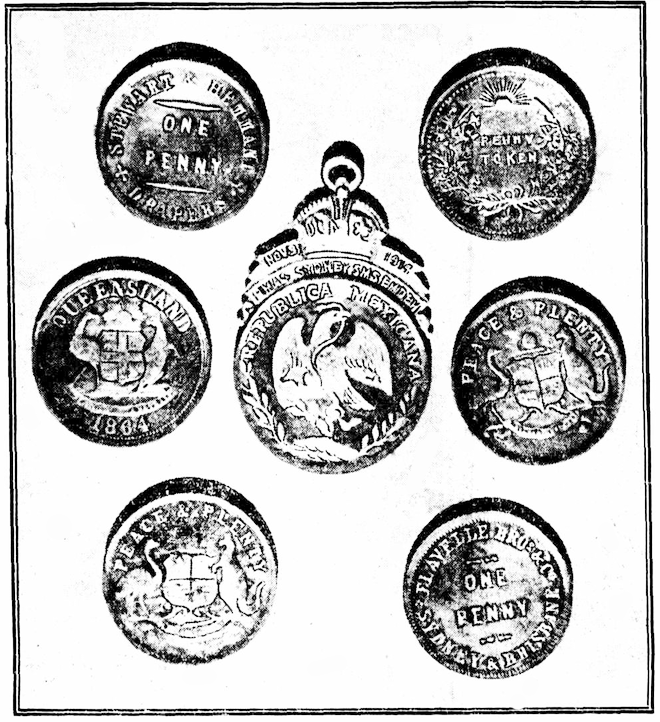
The Daily Mail (Brisbane), 19th November 1924 page 9.
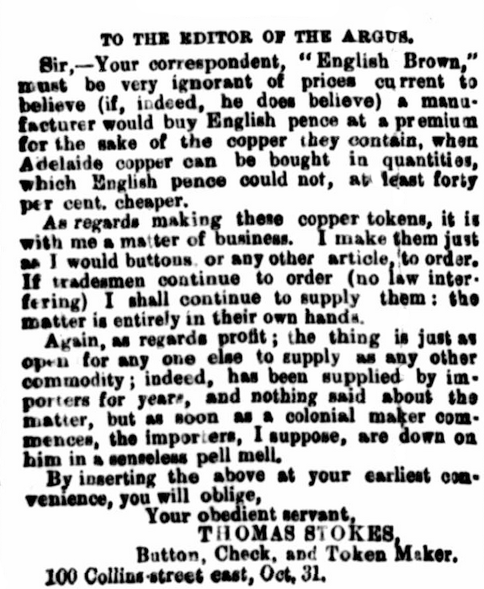
The Argus (Melbourne), 3rd November 1862 page 6. Stokes was replying to a critic of his tokens.
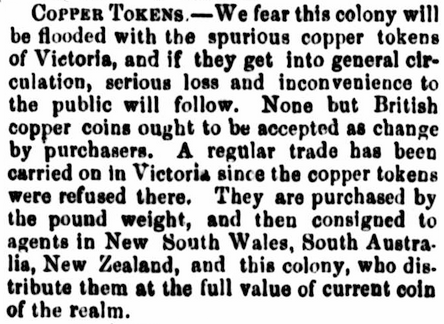
The Courier (Brisbane), 29th January 1863. The journalists of the Courier wrote multiple negative articles about the tokens. It must be remembered that they came into existence out of necessity, and were begrudgingly accepted by the authorities.
Tokens are collectable (the hobby is called exonumia). Some are very rare and valuable, others relatively common.
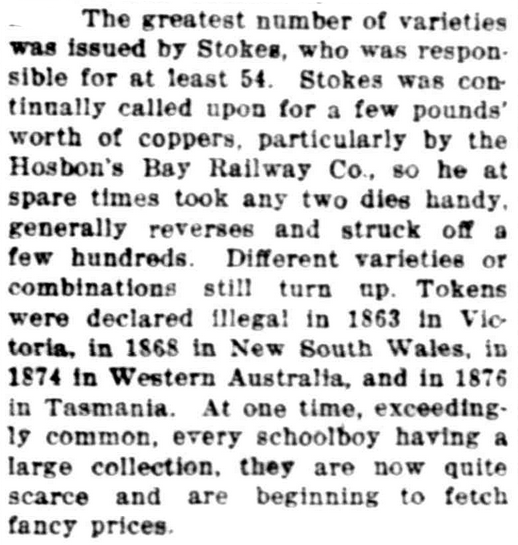
The Horsham Times (Vic), 3rd October 1930 page 11.
https://coinworks.com.au/Australasian-Trade-Tokens-1860-1878
For all comments/questions, please use the Contact page.
